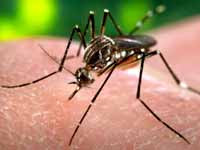.jpg)
After months of warnings and frantic preparations, the second wave of the swine flu pandemic is starting to be felt around the country, as doctors, health clinics, hospitals and schools are reporting rapidly increasing numbers of patients experiencing flu symptoms.
"H1N1 is spreading widely throughout the U.S.," said Thomas R. Frieden, director of the federal Centers for Disease Control and Prevention in Atlanta during a briefing on Friday. At least 26 states, including Maryland and Virginia, are now reporting widespread flu activity, up from 21 a week earlier, the CDC reported. "H1N1 activity is now widespread," Frieden said.
While so far most cases are mild, and the health-care system is handling the load, officials say the number of people seeking treatment for the flu is unprecedented for this time of year. Even though some parts of the Southeast that started seeing a surge of cases first now seem to be showing a decline in cases, that could be a temporary reprieve, Frieden said. And other parts of the country are likely just starting to feel the second wave.
Maryland health authorities on Friday said a Baltimore-area youth with an underlying health problem had died of swine flu, the state's first such fatality involving a youth.
Despite new federal guidelines aimed at keeping schools open, the pandemic has already prompted scattered school closings around the country in recent weeks, including 42 schools that closed in eight states on Friday, affecting more than 16,000 students.
Many colleges and universities have been hit particularly hard, forcing some to open separate dorms for sick students. Ninety-one percent of the 267 colleges and universities being surveyed by the American College Health Association are now reporting cases.
At the Le Bonheur Children's Medical Center, the number of patients coming in each day shot up from about 180 to a peak of more than 400, prompting officials to erect a 2,500-square foot tent in the parking lot to handle the surge. More than 300 patients are still coming in every day.
"What we initially did was try to bring in extra folks, but you soon run out of extra people and extra spaces to put people," said Barry Gilmore, the hospital's medical director for emergency services.
Doctors, nurses, paramedics or other workers screen patients in the tent and decide who can safely go home. Anyone with other health problems that put them at risk, such as asthma, heart disease or kidney disease, is sent immediately to the emergency room. All patients who are sent home are contacted within 24 to 48 hours to make sure they are recovering.
"We are mostly dealing with the worried well or kids who are mildly ill but not severely ill," he said..New York Times, Sept 26




